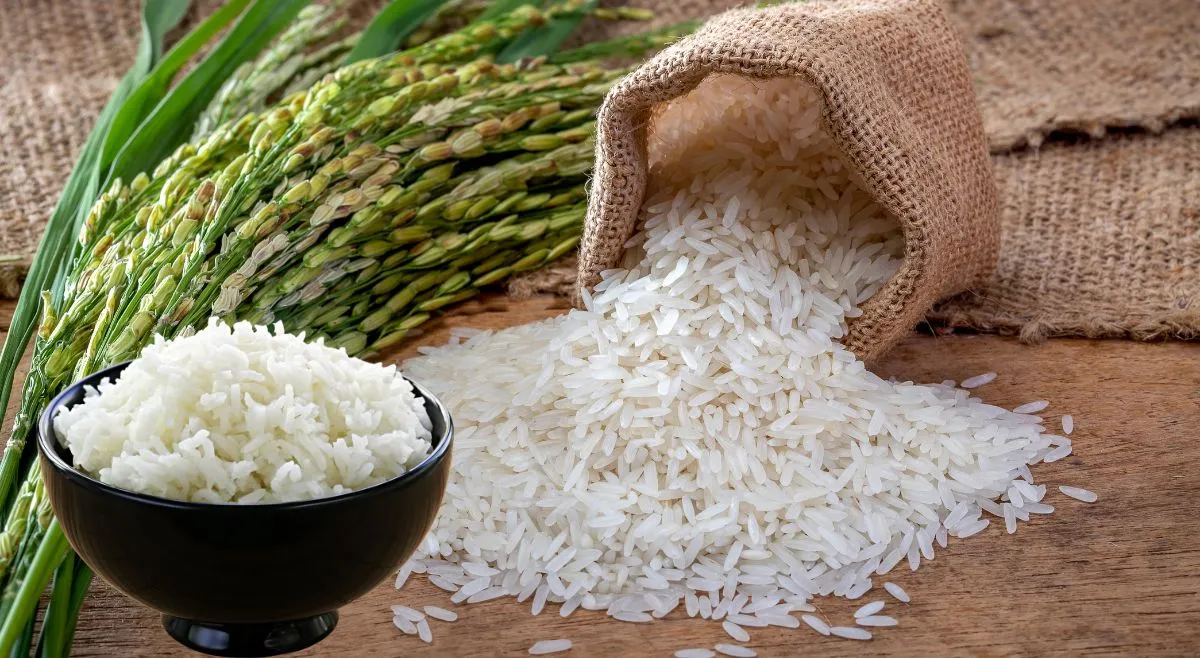- By Ridam Sharma
- Thu, 08 May 2025 02:41 PM (IST)
- Source:JND
World’s Largest Rice-Producing Countries: Rice is one of the most staple foods across the globe. The crop is eaten by over half of the world's population. However, the production only happens in a few Asian countries. The largest rice-producing states dominate the rice market around the world, while others lack in rice harvesting and export. To find out more, here’s a list of the top 10 largest rice-producing countries in the world, along with their total production last year, i.e. 2024, according to the USDA Foreign Agricultural Service data.
List Of The Top 10 Largest Rice-Producing Countries In The World:
| Market | % of Global Production | Total Production (2024/2025, Metric Tons) |
|---|---|---|
| India | 27% | 147 Million |
| China | 27% | 145.28 Million |
| Bangladesh | 7% | 36.6 Million |
| Indonesia | 6% | 34.6 Million |
| Vietnam | 5% | 26.5 Million |
| Thailand | 4% | 20.1 Million |
| Philippines | 2% | 12 Million |
| Burma | 2% | 11.85 Million |
| Pakistan | 2% | 10 Million |
| Brazil | 2% | 8.2 Million |
India
India is the largest rice-producing country in the world. The rice production in India is highly impacted by its agroclimatic zones. In the nation of billions, rice production predominates in states like West Bengal, Uttar Pradesh, and Punjab, especially the Basmati varieties of rice.
China
China is the second-largest rice-producing country in the world. China's enormous river basins and highly developed irrigation system provide favourable conditions for the high production of rice in the nation. Rice is a staple food in China and a key sector of the rural economy.
Bangladesh
Bangladesh's deltaic plains are very fertile and one of the major producers of rice. Here, the growing rice market is responsible for food security and rural livelihoods. Additionally, multiple harvest system is also easily possible due to an abundant water supply in the area.
Indonesia
Indonesia's tropical climate is perfect for rice cultivation all year round, especially on Java and Sumatra. In the year, the increased yields were possible, all due to quality seed varieties and government initiatives, and rice has become essential to national food security.
Vietnam
Vietnam's Mekong and Red River deltas are significant rice-producing hubs for domestic and export purposes. The Mekong Delta alone yields nearly half the nation's production.
Thailand
Thailand is widely known for producing high-quality jasmine rice and is among the world's leading exporters. The Chao Phraya River basin is the hub of its rice economy, supporting millions of rural livelihoods.
Philippines
Rice is the Philippines' largest food crop, which is cultivated mainly in Luzon and Mindanao. The country also imports rice to meet local demand due to population growth and yield problems.
Myanmar (Burma)
Myanmar have centuries of rice cultivation experience, with the Irrawaddy Delta being the main production area. Despite problems like weather and infrastructure, rice remains the main reason for the country’s growing economy and export earnings.
Pakistan
India’s neighbouring country, Pakistan, is widely known for their aromatic Basmati and long-grain rice production, which mainly grows in Punjab and Sindh. Rice is a valuable export crop in Pakistan and a major contributor to its GDP.
Japan
Japan's rice culture is world famous. While Japan's rice production is lower than that of other Asian nations, Japanese rice is known for its world-class quality and is grown mainly in regions like Honshu.
Read Also: Why Is Kesar Expensive In India? List Of Top 10 Saffron Producing Countries In The World
Read Also: List Of Items Likely To Get More Expensive After India Bans Pakistan Trade

